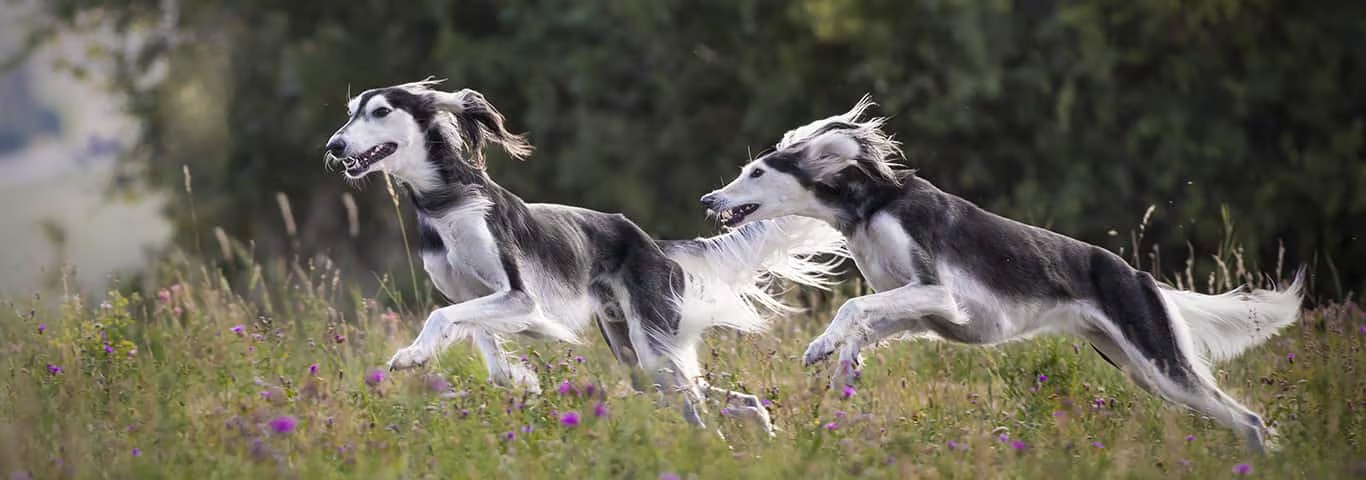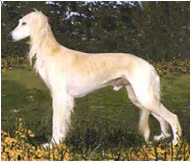The saluki is decidedly a one-family dog, tending to be aloof, or even shy, with strangers. This is a devoted, but not particularly demonstrative, breed that will relish sitting by your side, not on your lap. Salukis are quiet at home, extremely gentle with children, and good with other dogs. They make adequate watchdogs, but miserable protection dogs.
Salukis must get a chance to run, and run hard, every day. Given this chance, they are moderately obedient, as long as they happen to want the same thing you want.
Salukis like to lounge and love to run, but live to chase. Make no doubt about it, this quiet, gentle, ethereal being with the big innocent eyes is a serious hunter at heart.
Salukis must have their creature comforts: a soft bed (preferably yours) and a warm room are at the top of the list. Given this, they are content to lounge for hours. Still, they need to get out and push themselves to their limits at least once a day. Their inability to just say no when it comes to running after wildlife, combined with their reluctance to come when called and their steadfast belief that all cars will stop for them, makes letting a saluki loose in an unfenced area a risky practice.
Salukis are naturally thin, and many are extremely picky eaters. If you cannot bear to have strangers accuse you of not feeding your dog enough, do not get a saluki.
Upkeep for the feathered variety consists of brushing the long feathers a couple of times a week; otherwise mats can form in the ears and between the toes where the hair also grows long.
Dogs with very long ear feathering may need to wear an ear stocking (snood) when eating to keep the ears out of the food. Feathered salukis are genetically long-coated dogs. Spayed salukis often grow long body hair that may need clipping to retain the saluki appearance.
The saluki is one of several breeds that can trace its roots back to the ancient Egyptians. It has been prized since ancient times for its ability in the hunt, running down gazelle, hare and other swift prey over hot desert sands, providing sport for kings and food for nomads. In a culture that considered dogs unclean, the saluki alone was allowed to share the Bedouin tents and was dubbed "El Hor" ("the noble one").
Breeding with non-salukis was strictly forbidden, a practice that allowed the Saluki to remain virtually unchanged for thousands of years, although it has always exhibited a wide variety of styles. Part of this variety arose from the wide distribution of the breed throughout the Middle East, with different tribes favoring dogs that were best adapted to hunt different game over different terrain.
When the Saluki came to England in the early 1900s, breed fanciers made sure that the standard allowed for all the variation in the breed. To this day, the saluki comes in many different styles, all of which are equally correct. The litmus test has always been one of coursing ability, and both show-bred salukis and those straight from the desert are still adept at catching hares, although most salukis are even more talented at capturing hearts.






















